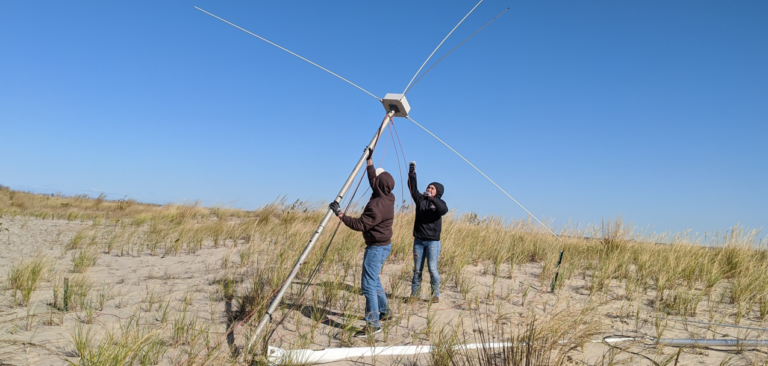The National Oceanic and Atmospheric Administration has announced an investment through President Biden’s Investing in America agenda of US$14m over two years for the US Integrated Ocean Observing System (IOOS) to support improved observing systems for the coasts, oceans and Great Lakes of the USA.
The organization highlighted that understanding current and historic ocean and Great Lakes conditions through high-quality, integrated data sets is essential to a sustainable economy working in and around the ocean, weather and climate forecasting and prediction, and preparing communities for changing conditions.
For over 20 years, IOOS has worked with partners to develop a sustainable national coastal, ocean and Great Lakes observing system. The investment under the Bipartisan Infrastructure Law enables the system to improve, expand and modernize – reducing risk within the system and ensuring that IOOS is able to provide environmental intelligence to users throughout the country.
“The Biden-Harris Administration is committed to ensuring that the US remains on the cutting edge of oceanic and freshwater research and observation,” said Gina Raimondo, US Secretary of Commerce. “High-quality environmental data allows decision makers across the public and private sector to prepare for severe weather events, protect against the damaging effects of climate change, and bolster coastal economies.”
“The work of the US Integrated Ocean Observing System is critical to improving safety, informing economic decisions, and protecting our environment,” said NOAA administrator Rick Spinrad Phd. “This significant investment from the Bipartisan Infrastructure Law will better equip our community partners to provide the highest quality ocean data and intelligence to enhance a sustainable New Blue Economy.”
The US$14m from the Bipartisan Infrastructure Law will modernize and recapitalize ocean-observing assets, networks and communications systems that are essential for ongoing coastal, ocean and Great Lakes monitoring. NOAA will support a total of 11 awards to IOOS’s Regional Associations, which are the non-federal partners that lead the coordination and implementation of coastal and ocean observing systems on a local and regional scale. The regional associations collaborate with communities, stakeholders and local, state and tribal governing bodies to ensure that IOOS meets regional and national data needs.
“This investment is a significant opportunity to push the US Integrated Ocean Observing System forward,” said Carl Gouldman, office director, US IOOS. “These funds allow us to address current needs within our networks of people and technology while also preparing for future challenges, ensuring that IOOS will remain a responsive and key source of high-quality coastal data and information.”
The 11 investment priorities for the IOOS Regional Associations are:
- The Alaska Ocean Observing System (AOOS), which invest in modernizing existing observing infrastructure measurement programs in Alaska and continue the development of a Marine Life Data Assembly Center.
- The Caribbean Coastal Ocean Observing System (CARICOOS), which will support and replace aging observing infrastructure, expand observing capabilities, and monitor water quality in support of coastal barrier restoration initiatives funded by the federal government in a region still recovering from 2017’s Hurricane Maria.
- The Central and Northern California Ocean Observing System (CeNCOOS), which will support and upgrade observing infrastructure, including high-frequency radar, shore stations, animal telemetry, and glider operations as well as data logging and transmission, for the central and northern California coasts.
- The Gulf of Mexico Coastal Ocean Observing System (GCOOS), which will support and update observing infrastructure related to waves, currents, and water column profiles, as well as improve the gathering and dissemination of observing data and information.
- The Great Lakes Observing System (GLOS), which will support and upgrade observing infrastructure to address sustained monitoring capabilities throughout the Great Lakes.
- The Mid-Atlantic Regional Association Coastal Ocean Observing System (MARACOOS)will upgrade the Mid-Atlantic high-frequency radar system, support and improve the glider data assembly center and stakeholder-based product development, and create a pilot street-level coastal flooding observation testbed.
- The Northwest Association of Networked Ocean Observing Systems (NANOOS) will update and upgrade observing infrastructure, including buoys and gliders that are being revitalized and equipped with cutting-edge sensor technologies throughout Pacific Northwest coastal waters, estuaries, and shorelines.
- The Northeastern Regional Association of Coastal Ocean Observing Systems (NERACOOS) will upgrade and update observing infrastructure, including improvements to the offshore buoy system, water quality sensors, water level monitoring stations, and high-frequency radar, as well as make improvements to the data management and cyberinfrastructure system in the northeast region.
- The Pacific Islands Ocean Observing System (PacIOOS) will update and upgrade observing infrastructure related to glider, buoy, and modeling operations, water quality monitoring, and ecosystem resources.
- The Southern California Coastal Ocean Observing System (SCCOOS) will update and replace infrastructure related to surface currents, glider operations, shore stations, harmful algal bloom monitoring, and animal telemetry in southern California.
- The Southeast Coastal Ocean Observing Regional Association (SECOORA) will expand and update observing infrastructure in the southeastern region including water level, high-frequency radar, and buoy networks as well as investing in new infrastructure for ocean acidification monitoring.



